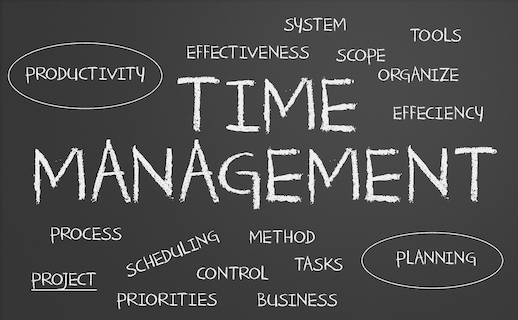Timeboxing
Timeboxing is a time management technique where a specific amount of time is allocated for a specific task or set of tasks. The goal of timeboxing is to increase productivity and focus by setting a clear deadline for completion and working within that time frame to accomplish as much as possible. It can also prioritize tasks by allocating more time to more important or complex tasks.
Budgeting for your time
I always consider timeboxing as budgeting for your time. Timeboxing and budgeting are similar in that they both involve allocating a specific amount of resources (time or money, respectively) to different tasks or activities. However, they have some key differences as well.
One main difference is that timeboxing focuses on allocating a specific amount of time to each task, while budgeting focuses on allocating a specific amount of money. Additionally, budgeting typically involves long-term planning and forecasting, while timeboxing is more focused on short-term planning and staying on track in the present.
Another difference is that budgeting often involves setting limits and making trade-offs; for example, you may have to cut back on spending in one area to afford something else. While timeboxing may also involve making trade-offs, the focus is more on using the time efficiently.
So timeboxing and budgeting are similar in that they both involve allocating resources. Still, they have a different focus, time or money and different duration of planning, short-term or long-term.
Boost your productivity with timeboxing
Timeboxing can improve productivity in several ways:
-
Setting a clear deadline: By allocating a specific amount of time to a task, timeboxing sets a clear deadline for completion. This can increase motivation and focus, as you know you have a limited amount of time to get the task done.
-
Prioritizing tasks: By allocating more time to more important or complex tasks, timeboxing helps to prioritize and ensure that the most important tasks get done first.
-
Avoiding distractions: By focusing on one task at a time and working within a set time frame, timeboxing can help to minimize distractions and interruptions that can disrupt productivity.
-
Breaking down large tasks: Timeboxing can also be used to break down large or overwhelming tasks into smaller, more manageable chunks. This can make it easier to focus and make progress on the task.
-
Avoiding procrastination: Timeboxing also helps to avoid procrastination by providing a clear starting point and a clear endpoint. It helps you to focus on the task at hand, as you know that you have only a certain amount of time to complete it.
Overall, timeboxing can help to increase focus, motivation, and productivity by providing clear deadlines, prioritizing tasks, minimizing distractions, breaking down large tasks, and avoiding procrastination.
Implementing Timeboxing

Several techniques can be used when implementing timeboxing:
-
Pomodoro Technique: We covered The Pomodoro Technique in this post. This technique involves breaking work sessions into 25-minute chunks, called a “pomodoro,” with short breaks in between. This helps to keep you focused and motivated during the work session and allows for short breaks to rest and recharge.
-
Time blocking: This technique involves breaking your day into blocks of time, each dedicated to a specific task or set of tasks. This can help you to visualize your schedule, prioritize tasks, and stay on track throughout the day.
-
The Eisenhower Matrix: This technique divides tasks into four categories based on their level of importance and urgency: important and urgent, important but not urgent, urgent but not important, and not important or urgent. This helps to prioritize tasks and manage time effectively.
-
The 80/20 Rule: This technique is also known as the Pareto Principle, it states that 80% of the effects come from 20% of the causes, and thus, you should focus on the 20% of the task that will give you 80% of the results.
-
The 5-Minute Rule: This technique involves setting a timer for 5 minutes and starting to work on a task. Once the timer goes off, you can decide whether to keep working or move on to something else. This is a simple and easy way to get started on tasks you may be putting off.
These are some examples of timeboxing techniques, some other popular ones include Time Audit, Time Log, Time Budgeting, Time Management Matrix, etc. The key is to find the one that works best for you and your work style.
Timeboxing Techniques

Here are some more details on other timeboxing techniques:
-
Time Audit: A time audit is a method of tracking how you spend your time by keeping a detailed log of your activities throughout the day. This can help you to identify where your time is being wasted and make adjustments to your schedule to allocate your time better.
-
Time Log: A time log is similar to a time audit but typically involves less detailed tracking of your activities. This can include noting tasks’ start and end times or simply making a list of tasks completed during the day.
-
Time Budgeting: Time budgeting is allocating a specific amount of time to different tasks or activities, similar to budgeting money. This can include creating a schedule for the day, week, or month and allocating specific blocks of time to different tasks.
-
Time Management Matrix: The Time Management Matrix is a tool to classify tasks by their level of importance and urgency. The matrix is divided into four quadrants: Urgent and important, Not Urgent but Important, Urgent but not important, and Not urgent and not important. This helps to prioritize tasks and manage time effectively.
-
Time Management by Goals: It’s a technique where you set specific goals for your day, week, or month and align your tasks with those goals. It helps you to focus on what’s important and make sure that you’re using your time in a way that will help you achieve your goals.
These are just a few examples of timeboxing techniques, there are many different methods and tools available. The key is to find the one that works best for you and your work style and adapt it to your needs.
Conclusion
Timeboxing is a very important tool to improve your productivity.
One of the most important benefits of timeboxing is that it helps to increase focus and productivity by setting clear deadlines for completing tasks and working within a set time frame. By allocating a specific amount of time to each task, timeboxing helps to prioritize and ensure that the most important tasks get done first. This can lead to better time management and, ultimately, more efficient use of time.
Additionally, timeboxing can help to minimize distractions and interruptions that can disrupt productivity by focusing on one task at a time and working within a set time frame. It also helps to break down large tasks into smaller, more manageable chunks of time, making it easier to focus and make progress on the task.
Another benefit of timeboxing is that it helps to avoid procrastination by providing a clear starting point and a clear endpoint; this helps you to focus on the task at hand, as you know that you have only a certain amount of time to complete it.
Overall, the most important benefit of timeboxing is that it helps you to use your time more efficiently and effectively by setting clear deadlines, prioritizing tasks, minimizing distractions, breaking down large tasks, and avoiding procrastination.